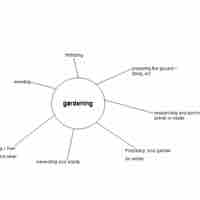Chapter 3
Preparing the Speech: A Process Outline
By Boundless

The introduction of your speech establishes your speech's purpose, previews your key points and tells your audience why they should listen.

The body of your speech is the point at which you go into full detail about each of your main points. The body is where you tell your story.

The conclusion of your speech summarizes your purpose and main points while leaving a lasting impression with your audience.

Transitions allow your speech to flow smoothly from one section or point to another.

When choosing your speech topic, brainstorm to generate many ideas, and distill those ideas to find your singular topic.

Knowing and understanding your audience is one of the most important parts of developing an effective speech.

In order to fully substantiate any claims you make in your speech, you must fully research those claims and provide supporting evidence.

All speeches must have a point or a main argument – a thesis.

Use a variety of ways to support the ideas and claims that you make with your thesis statement to give your speech depth and dynamics.
Arrange your speech – your thesis, additional points, and supporting evidence – in a way that will make sense to your audience.

A good speech is not written in one sitting; write multiple drafts, then review and edit before settling on a final text.

Practice makes perfect!

Details like how you dress, enunciate, and use body language can be just as important as what you say.